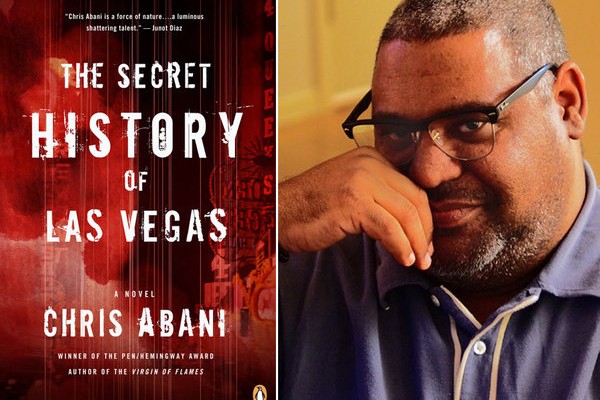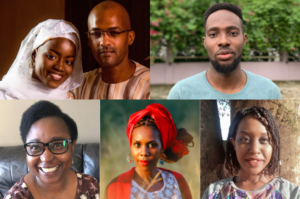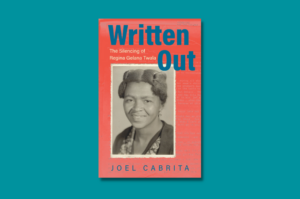Pub. Date: Jan 7, 2014. Penguin. 319 pp. Download HERE.
In a 1986 interview, the Zimbabwean novelist, Dambudzo Marachera, speaks of a strange artistic sensibility. He speaks of how the will to write often takes him to “a region where a ghost has rights.” In the same interview, he confesses to having a bizarre fascination with history. “For me, as it was for James Joyce,” he says, “history is simply a nightmare from which I am trying to wake up.” As luck would have it, one of the two epigraphs in the opening pages of The Secret History of Las Vegas is Joyce’s quote: “history is a nightmare from which I am trying to wake.”
It seems me that in this endlessly entertaining novel Chris Abani connects the dots between Marachera’s enigmatic statement about writing and Joyce’s equally strange idea of history. In Abani’s novel, it is possible to wake up from the nightmare of history. In fact, the labor of the novelist consists in inducing such an awakening. It’s just that one awakens, not to a “perpetual present” where the nightmare of the past is forgotten but to “a region where a ghost has rights,”—or, rather, a world where the past not only haunts the present but also has the right to address the future.
The Secret History of Las Vegas is an unsettling exploration into those violent and catastrophic moments that punctuate our sense of history as the story of human progress. It tells the story of Sunil Singh, a half Sikh, half Zulu South African psychiatrist who comes to Vegas, desperate to forget his involvement in the torture and death of many during the apartheid regime. In Vegas, Sunil is still plying the old trade. But this time, he conducts experiments on apes as part of a research project funded by the US military—to produce a serum that can manipulate psychopathic behaviors in humans. One day, he receives a call from Detective Salazar who is investigating a fresh case of dead bodies of homeless men found in dumps. While Salazar is trying to figure out whether these bodies are connected to a similar incident two years before, he finds a pair of conjoined twins in the vicinity of the body dump. Hoping that they are the serial killers he’s been looking for, Salazar asks Sunil to evaluate the deformed twin for psychopathic behavior. Sunil, Salazar, and the conjoined twin—named Fire and Water—become intertwined in a convoluted skein of stories bearing out the link between history, violence, and secrecy.
Abani’s novel has all the titillating elements that make crime fiction captivating—murders, prostitution, torture, forbidden love, government conspiracies, and so on. These elements are blended with an artistic sleight of hand that only a seasoned literary craftsman can muster (Secret History is Abani’s 4th novel). But what makes Abani’s novel so intensely gripping yet conceptually layered is the underlying metaphor of secrets. In Abani’s expert hands, the crime-fiction plot, driven by the secrecy of a violent crime, becomes a conceit for history itself.
As Sunil observes, “even in revelation,” Las Vegas is “obscured.” It’s “brightness was its own kind of night.” The cities we love the most are often those that, like Las Vegas, cast over our eyes a magical veil made of bright lights and big dreams. How do we get to the heart of a such a dissembling city? How do we unveil the darkness behind all that light? Abani’s novel offers us a way. It says to chase those nearly forgotten stories about the past that have become little more than “a confounding mix of hoaxes and urban legends”—stories about underground nuclear testing causing birth deformities, stories about desert ghost towns populated by this deformed humanity, stories about human bodies tortured and discarded in shallow graves during South Africa’s apartheid regime.
Abani’s novel seems to suggest that a true study of history—something that only the novelist can do— is divination. The truth about history does not reside in the hard, clear facts. These so-called outlandish narratives about the past of a city—every city has them—are divinatory beads on which we can “read the mind of the landscape, uncover its intentions and motives, and recalibrates is secret histories.” Abani’s novel is simultaneously a heart-pounding thriller and a brilliant thesis on history.










PHOTOS: Meeting African Authors at Chicago’s Printers Row Book Festival | Brittle Paper June 12, 2014 00:31
[…] which centered around his new novel—Secret History of Las Vegas. {Read my review of the novel HERE}. He did the usual, meaning he stunned everyone in the audience with his sheer brilliance. After […]